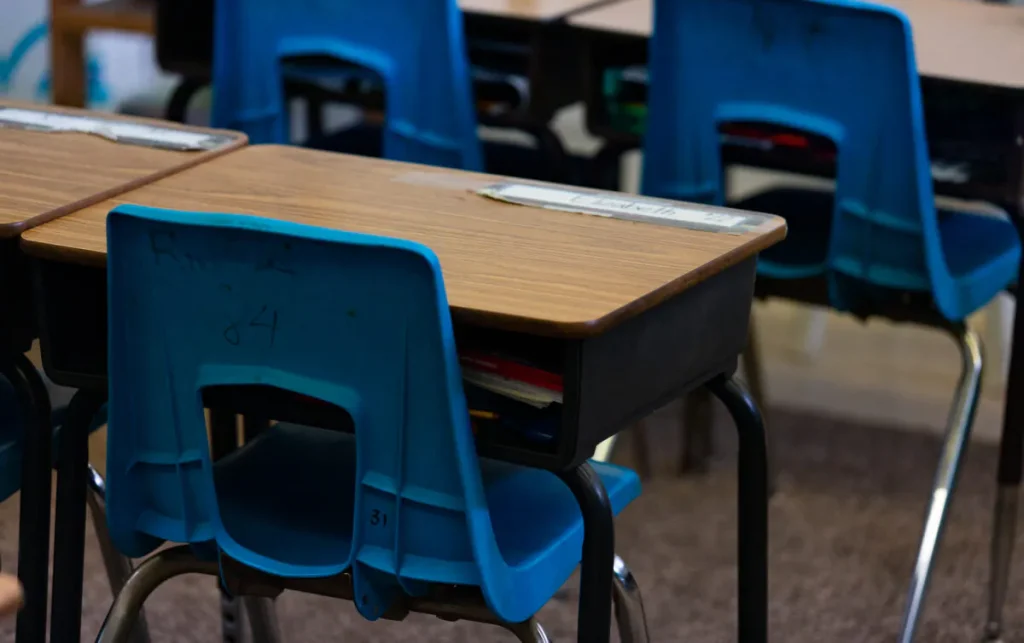Democrats defended school closures while Republicans called the decisions one of the worst policy mistakes of the COVID-19 pandemic during a contentious House hearing on July 26 titled “Generational Learning Loss: How Pandemic School Closures Hurt Students.”
A subcommittee from the House Committee on Education and the Workforce heard testimony from witnesses in the forum chaired by Rep. Aaron Bean (R-Fla.).
In his opening remarks, he said that learning loss during the pandemic was so severe that progress dating to the 1990s was erased.
“The Nation’s Report Card’s 2022 assessment for eighth graders found math scores are at their lowest point in nearly two decades. The same for reading scores. History and civics scores plummeted to their lowest mark since the tests were first administered in the 1990s. In other words, in the matter of only two years, a generation of progress was lost,” he added.
Mr. Bean believes that students continue to pay for the “needless school closures.”
“The mass shuttering of schools throughout the pandemic is one of our greatest education policy failures in our nation’s history,” he continued.
Closures Were ‘Necessary’
Democrats claimed the closures were necessary to prevent potential harm from the coronavirus.
Mary-Patricia Wray is a public policy consultant and mother of two from Baton Rouge, Louisiana. She testified that remote learning and other precautions kept her disabled son and other children like him safe through the pandemic.
“Causing educators and children like mine to choose between their life or an education is the absolute least American decision that we could make as a generation,” Ms. Wray said about reopening schools sooner.
During his heated remarks, Rep. Jamaal Bowman (D-N.Y.) said, “If we would’ve kept schools open, more people would have died due to COVID,” noting his previous experience as a school principal.
Numbers show that few children died from COVID-19. Many who did also had other conditions.
Many states led by Republican-controlled legislatures pushed for schools to re-open early. States guided by Democratic-controlled bodies tended to favor remote learning, as did most teachers’ unions.
Rep. Jahana Hayes (D-Conn.), a former national teacher of the year, said, “If kids are dead, they don’t learn.”
Rep. Suzanne Bonamici (D-Ore.) said similar.
Teachers’ Unions Responsible
Teachers’ unions are among the organizations responsible for prolonging school closures, Mr. Bean alleged.
“A Brookings Institute study found that school districts with lengthier collective bargaining agreements were less likely to start the fall 2020 semester with in-person instruction,” Mr. Bean explained, adding that the information indicates that longer shutdowns were not “predicated on pandemic severity.”
Derrell Bradford is an education policy expert and president of 50CAN, an organization that advocates at the local level for educational reforms. He also said teachers’ unions played a significant role in prolonged school closures during the pandemic. Labor actions in Kentucky and Oklahoma started the shutdowns, and they continued in Chicago and Los Angeles during the Democratic presidential primaries, he explained.
“Teachers unions saw this as a once-in-a-lifetime opportunity to get teacher pay on the federal balance sheet,” Mr. Bradford said, referring to extra emergency funds from the federal government earmarked for schools.
“This is a generational tragedy,” he added.
Lawmakers should investigate right and wrong decisions made by schools during the pandemic and explore what happened to the $190 billion in federal money spent on education over the time period, Mr. Bean pointed out.
Mr. Bradford agreed, highlighting a New York Times report that showed: “In Klamath County, [Oregon,] they are spending 70 percent of their relief dollars to buy turf fields, renovate bleachers, build a gym, and resurface a parking lot. Sadly, what’s been proven is that if you give American schools $190 billion in a black box with no accountability, they’ll spend the money on themselves.”
Nat Malkus, senior fellow and deputy director of education policy at the American Enterprise Institute, said: “The pandemic caused the largest negative shock to student learning the country has ever seen.”
“The third of districts that were most in-person in 2021 lost 44 percent of a year’s progress in math, the most remote third lost over 60 percent of a year,” Mr. Malkus said.
“The instability of quarantines, spikes in chronic absenteeism, and disruptions in learning all hampered teacher capacity and student learning,” he added.
Half of the students across the U.S. started this school year a grade level behind in at least one subject, according to federal Education Department data from earlier in 2023.
That number was around 36 percent before the pandemic.
Rep. Mary Miller (R-Ill.) said the length of closures increased the learning loss problem.
“The left will concede that the pandemic caused learning loss. However, the evidence suggests that learning loss is far worse than it should’ve been because the Democrat politicians and their teacher union allies kept schools closed far longer than what was necessary,” Ms. Miller noted.



